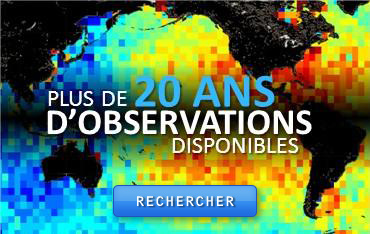Operational News
Operational news about Ssalto and Duacs processing system.
21.10.2010 [Envisat] Orbit change impacts on Duacs NRT-RT products
As planned, Envisat will start tomorrow, 22 October 2010, a series of maneuvers to reach its new orbit. Some important impacts are expected on the Duacs NRT-RT data flow.[details]
01.10.2010 [Envisat] Orbit change impacts from October 22, 2010

Envisat will bring to a new lower orbit to ensure an additional 3 years lifespan. During this period of manoeuvres (22 Oct - 2 Nov 2010), the Envisat data flow will be suspended and no data from Envisat will be processed in Duacs in Near Real-Time.[details]
07.09.2010 [Jason-1] temporary interruption on 8th Sept. 2010
Please note that there will be a mission interruption on Jason-1 on Wednesday, 8 September 2010 between 05h19mn42s and 06h46mn25s TU.
This interruption is due to gyroscope calibration (POS2 in init mode) as part of the off-pointing mitigation plan.
As a result, no altimeter telemetry will be available during this operation.
Sorry for the inconvenience.[details]
25.08.2010 [Jason-1] Interruption on Thursday August, 26th to improve mispointing performance.
Please note that there will be a mission interruption on Jason-1 on Thursday August, 26th at the anti-subsolar point of 06h32min30s TU and during 80 minutes.
This interruption is due to gyroscope calibration (POS2 in init mode) in order to improve mispointing performance.
So, no altimeter telemetry will be available during this operation.
Sorry for the inconvenience.
02.08.2010 [Jason-1] new Temporary reintegration of Jason-1 data flows in Duacs
Following the Jason-1 manoeuvers of this week-end, recent data from Jason-1 were not processed in Duacs in NRT. Thanks to a combination of corrections, data showed that the degradation was minor. Thus all data flows (IGDR or OGDR) from Jason-1 since the initial fuel depletion maneuver are re-injected in Duacs (along-track SLA products, multi-satellite map).[details]
28.07.2010 [Jason-1] Temporary reintegration of Jason-1 data flows in Duacs (copie 1)
In consequence of the Jason-1 manoeuvers, recent data from Jason-1 were not processed in Duacs in NRT. Thanks to a combination of corrections, data showed that the degradation was minor. Thus all data flows (IGDR or OGDR) from Jason-1 since the initial fuel depletion maneuver are re-injected in Duacs (along-track SLA products, multi-satellite map).
28.07.2010 [Jason-1] Low tracking performance on the star trackers
Following the Jason-1 maneuvers on 19-July-2010, the star tracker performance is once again degraded.[details]
20.07.2010 [Jason-1] End of Life Plan
Jason-1 mission is starting today a series of maneuvers. Some impacts on products in terms of quality and latency are expected.[details]
25.06.2010 [Jason-1 & 2] Delivery delay on IGDR products due to Met anomaly
Due to an anomaly in meteorological fields, the JAson-1 and Jason-2 IGDR have some delays. [details]
10.06.2010 [Jason-1] situation improving

The situation of Jason-1 is largely improved starting with OSDR product named JA1_OSD_2PcS20100609_140024_07073[details]

















